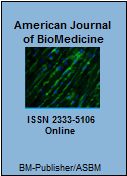Chenglin Wang¹, Pierre G. Demacker¹, David Shwann²*
Abstract
Endotoxemia aggravates myocardial depression following abdominal surgery through stimulating excessive inflammatory response. Therefore, inhibited of inflammatory signaling pathway is a potential therapeutic role for cardiac injury following sepsis. The purposes of this study is to investigated the potential role of XMU-MP-1 in myocardial injury following sepsis combined with hyperlipidemia. C57/BL6 mice aged 4 to 6 months were treated with endotoxin (0.5 mg/kg, iv) for 6hs or CLP/3ds. Myocardial inflammatory mediators levels were analyzed by enzyme-linked immunosorbent assay (ELISA) and left ventricle function was assessed using a microcatheter system. Mononuclear cells in the myocardium were examined using immunofluorescence staining.Mice were treated with LPS (0.5mg/kg iv). and LVF was assessed by the hemodynemic measurements. XMU-MP-1 administration suppressed the over-expression of MST1 and MST2 and alleviated heart damage caused by sepsis complicated with hyperlipidemia. In conclusion, XMU-MP-1 alleviated myocardial injury through suppressing MST1 and MST2, offering an alternative medication for sepsis associated with hyperlipidemia.
Keywords: Hyperlipidemia; Endotoxin ; Cardiac injury; Sepsis
Copyright © 2016 by The American Society for BioMedicine and BM-Publisher, Inc.
References
- Lusis AJ. Atherosclerosis. Nature 2000;407:233-241. [PubMed]
- Toth PP. High-Density Lipoprotein and Cardiovascular Risk. Circulation 2004;109:1809-1812. [PubMed]
- Mahdy Ali K, Wonnerth A, Huber K, Wojta J. Cardiovascular disease risk reduction by raising HDL cholesterol–current therapies and future opportunities. Br J Pharmacol 2012;167:1177-1194. [PubMed]
- Slimani H, Zhai Z, Yousif NG, et al. Enhanced monocyte chemoattractant protein-1 production in aging mice exaggerates cardiac depression during endotoxemia. Crit Care 2014;18(5):527. [PubMed]
- Krabbe KS, Pedersen M, Bruunsgaard H. Inflammatory mediators in the elderly. Exp Gerontol. 2004;39:687-699. [PubMed]
- Türler A, Schwarz NT, Turler E, Kalff JC, Bauer AJ. MCP-1 causes leukocyte recruitment and subsequently endotoxemic ileus in rat. Am J Physiol Gastrointest Liver Physiol 2002;282:G145-G155. [PubMed]
- Yousif NG, Al-Amran FG. Novel Toll-like receptor-4 deficiency attenuates trastuzumab (Herceptin) induced cardiac injury in mice. BMC Cardiovasc Disord2011;11:62. [PubMed]
- Zhang WJ, Stocker R, McCall MR, Forte TM, Frei B. Lack of inhibitory effect of HDL on TNFalpha-induced adhesion molecule expression in human aortic endothelial cells. Atherosclerosis 2002;165:241-249. [PubMed]
- Wojcicka G, Jamroz-Wisniewska A, Horoszewicz K, Beltowski J. Liver X receptors (LXRs). Part I: structure, function, regulation of activity, and role in lipid metabolism. Postepy Hig Med Dosw (Online) 2007;61:736-759. [PubMed]
- Vosper H. Niacin: a re-emerging pharmaceutical for the treatment of dyslipidaemia. Br J Pharmacol 2009b;158:429-441. [PubMed]
- Walldius G, Jungner I. The apoB/apoA-I ratio: a strong, new risk factor for cardiovascular disease and a target for lipid-lowering therapy–a review of the evidence. J Intern Med 2006;259:493–519. [PubMed]
- Gomez Rosso L, Benitez MB, Fornari MC, et al. Alterations in cell adhesion molecules and other biomarkers of cardiovascular disease in patients with metabolic syndrome. Atherosclerosis- 2008;199:415-423. [PubMed]
- Kamanna VS, Ganji SH, Kashyap ML. The mechanism and mitigation of niacin-induced flushing. Int J Clin Pract 2009;63:1369-1377. [PubMed]
- van der Hoorn JW, de Haan W, Berbee JF, et al. Niacin increases HDL by reducing hepatic expression and plasma levels of cholesteryl ester transfer protein in APOE*3Leiden.CETP mice. Arterioscler Thromb Vasc Biol 2008;28:2016-2022. [PubMed]
- Joy T, Hegele RA. Is raising HDL a futile strategy for atheroprotection? Nat Rev Drug Discov 2008;7:143-155. [PubMed]
- Parhofer KG. Review of extended-release niacin/laropiprant fixed combination in the treatment of mixed dyslipidemia and primary hypercholesterolemia. Vasc Health Risk Manag 2009;5:901-908. [PubMed]
- Nordestgaard BG, Chapman MJ, Ray K. Lipoprotein(a) as a cardiovascular risk factor: current status. Eur Heart J. 2010;31:2844-2853. [PubMed]
- Yousif NG. Novel therapeutic role of siglec-E in down-regulation TLR4-mediated inflammatory response after global myocardial ischemia and reperfusion. Cardiovascular research 2014;103:s90. [Abstract]
- Ogata M, Tsujita M, Hossain MA, et al. On the mechanism for PPAR agonists to enhance ABCA1 gene expression. Atherosclerosis 2009;205:413-419. [PubMed]
- Fan F, He Z, Kong LL, et al. Pharmacological targeting of kinases MST1 and MST2 augments tissue repair and regeneration. Sci Transl Med 2016;8(352):352ra108. [PubMed]
READ THE FULL ARTICLE
1. Access this article through OpenAthens
2. Access this article through your login credentials/Subscription
3. Purchase this article at rate $55.00 and received Full-Text/PDF
You will have online immediate access to article following the completion of this purchase and you may download and print a copy of each article for your personal use. Use the coding below to purchase your article as PDF by credit card, debit card, will be asked to supply your billing card information. Before continue with your purchase please read carefully the BM-Publisher terms and conditions of purchase.
For any technique error please contact us and will be response to sending purchase article by email.
Thank you for visiting American Journal of BioMedicine. * = Required fields
Error: Contact form not found.
Author Services Portal
Submission Guidelines
Submit Your Paper
Supports Open Access
Track Your Article
Video abstracts
CME
Image challenge
Journal Metrics
Journal TOCs SpotiDoc Publons
Google Scholar CiteSeerx Crossref



